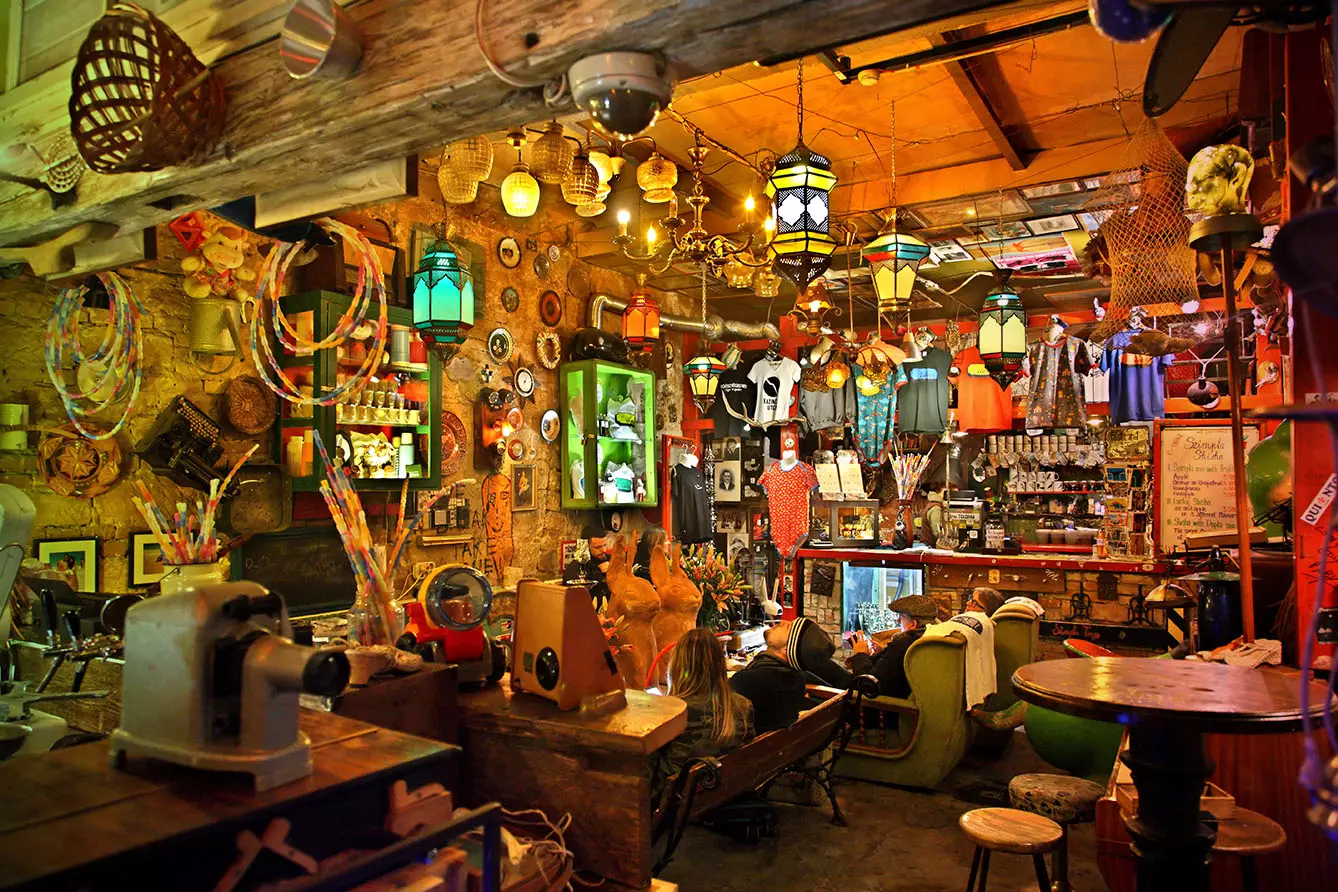Before we get this story right on its due track, which is a delightful story imbibing and passing the time in good company, we need to address the troublesome part of Central European modern history—namely, the issue of emptiness.
World War Two and subsequent affirmation of the new world order, resulting in a new network of Socialist countries, left us with blank spaces on the maps, empty after unwanted ethnicities were forced to leave and some more welcome were, sometimes also forcefully, moved in their stead. And a major part of this story is one of the Jews of Central and Eastern Europe, some lucky enough to emigrate, some still not at all.
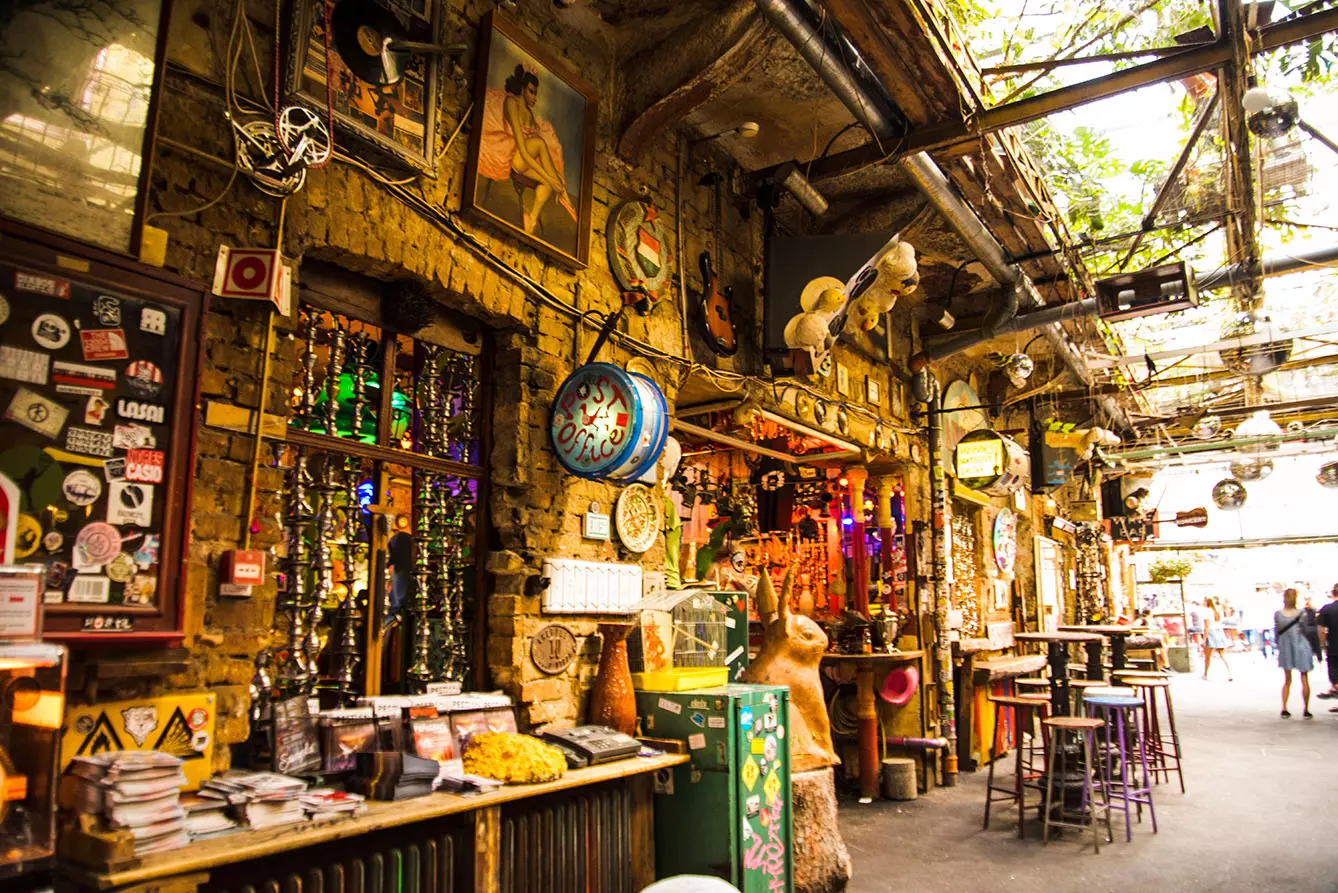
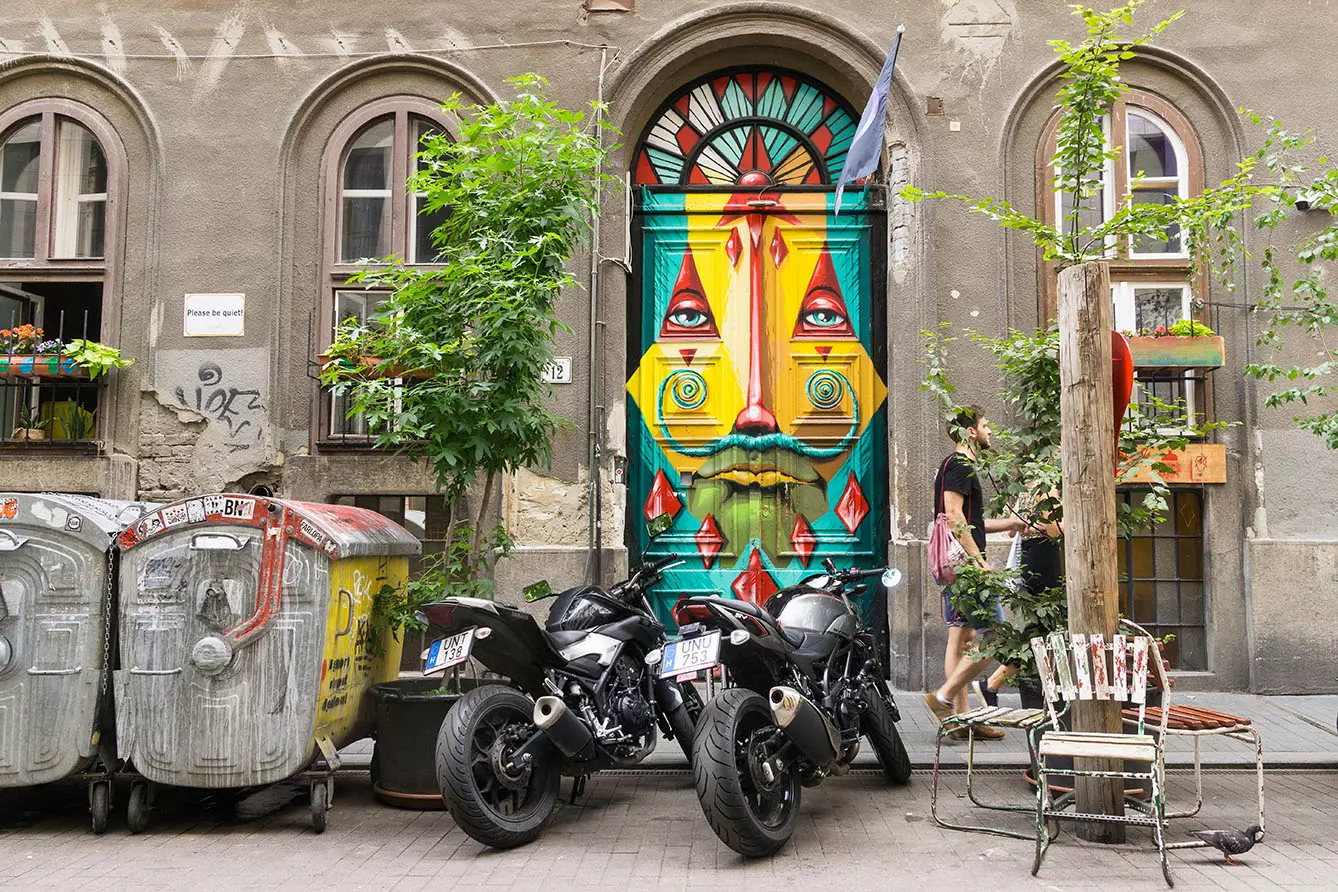
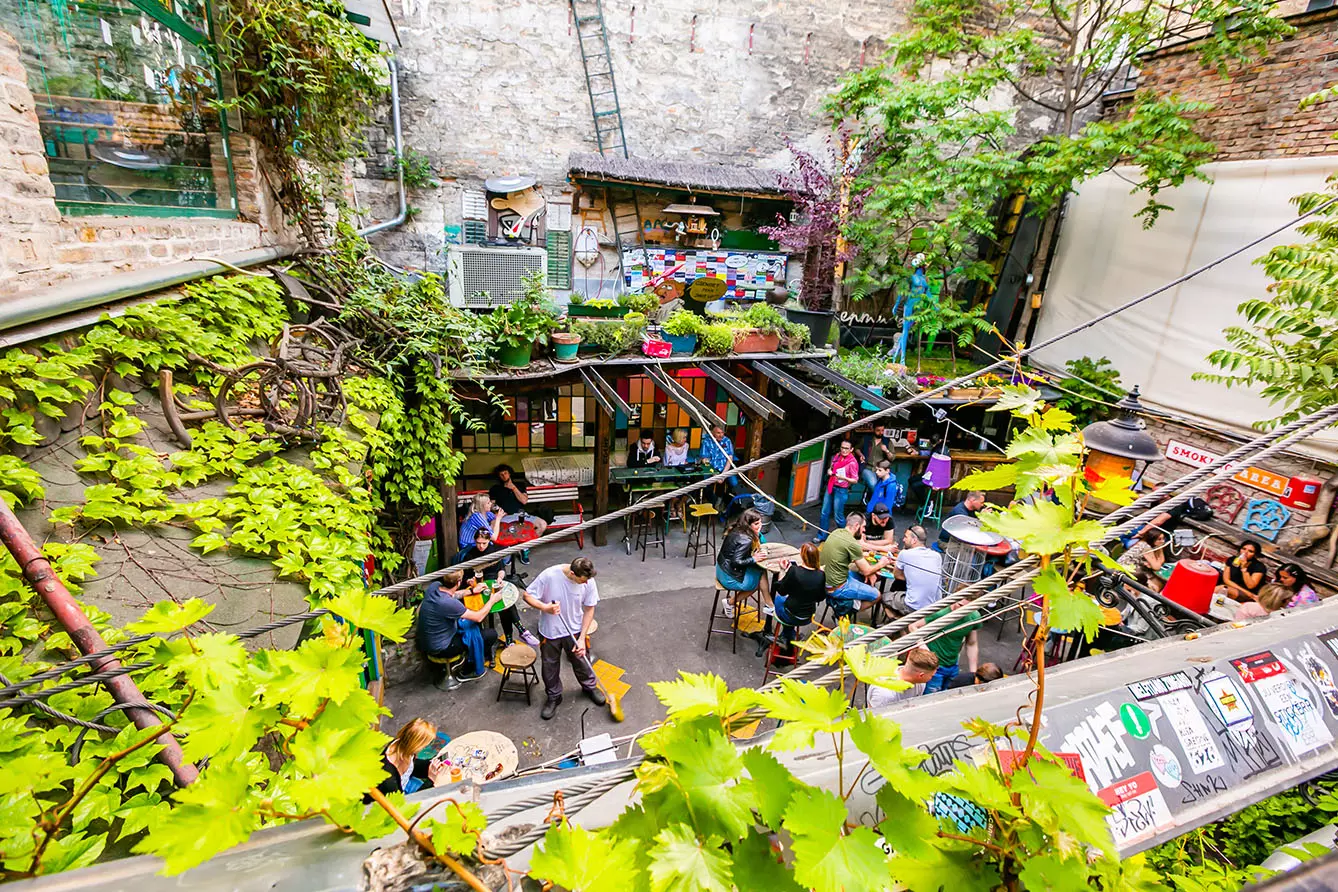
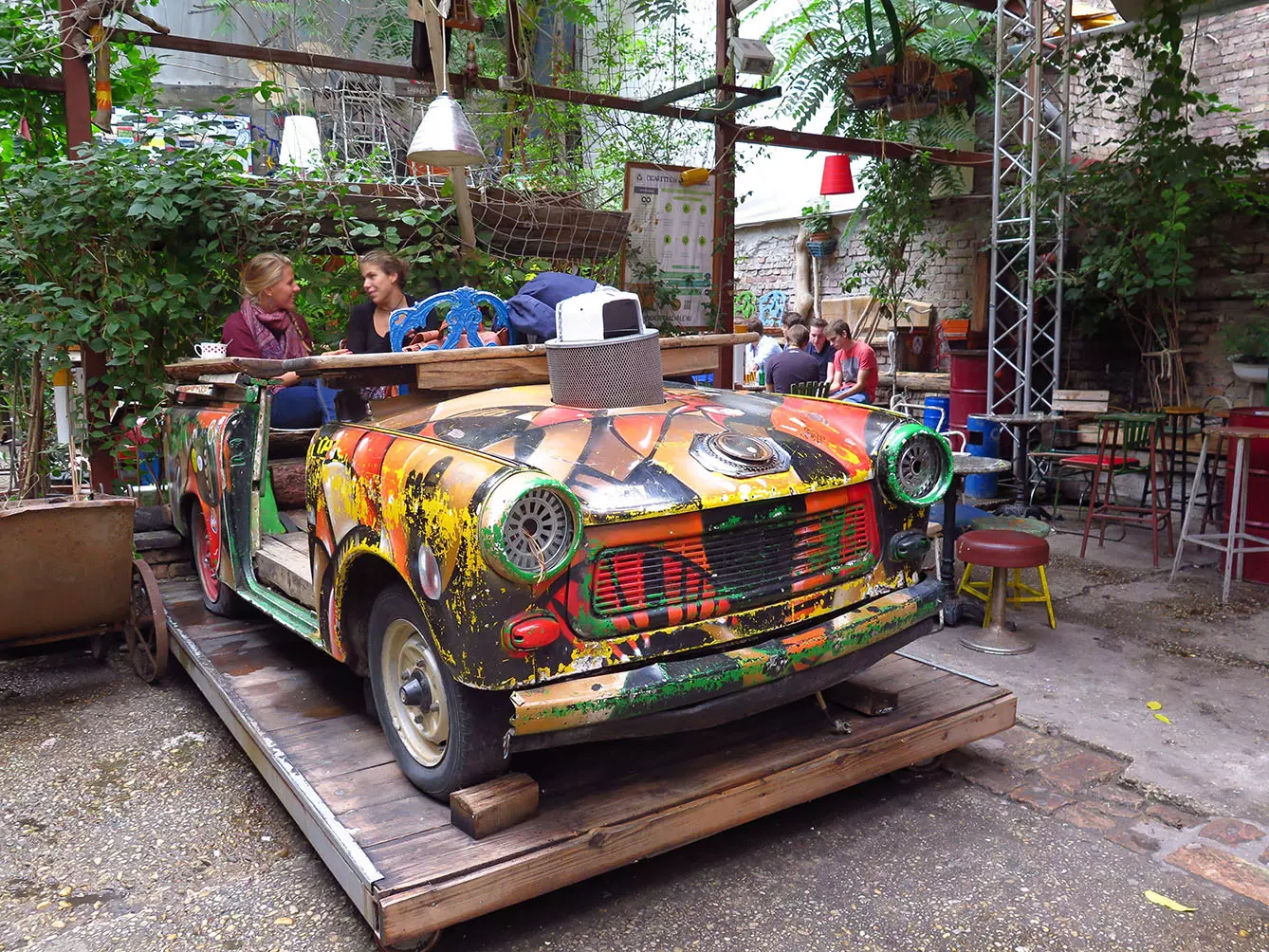
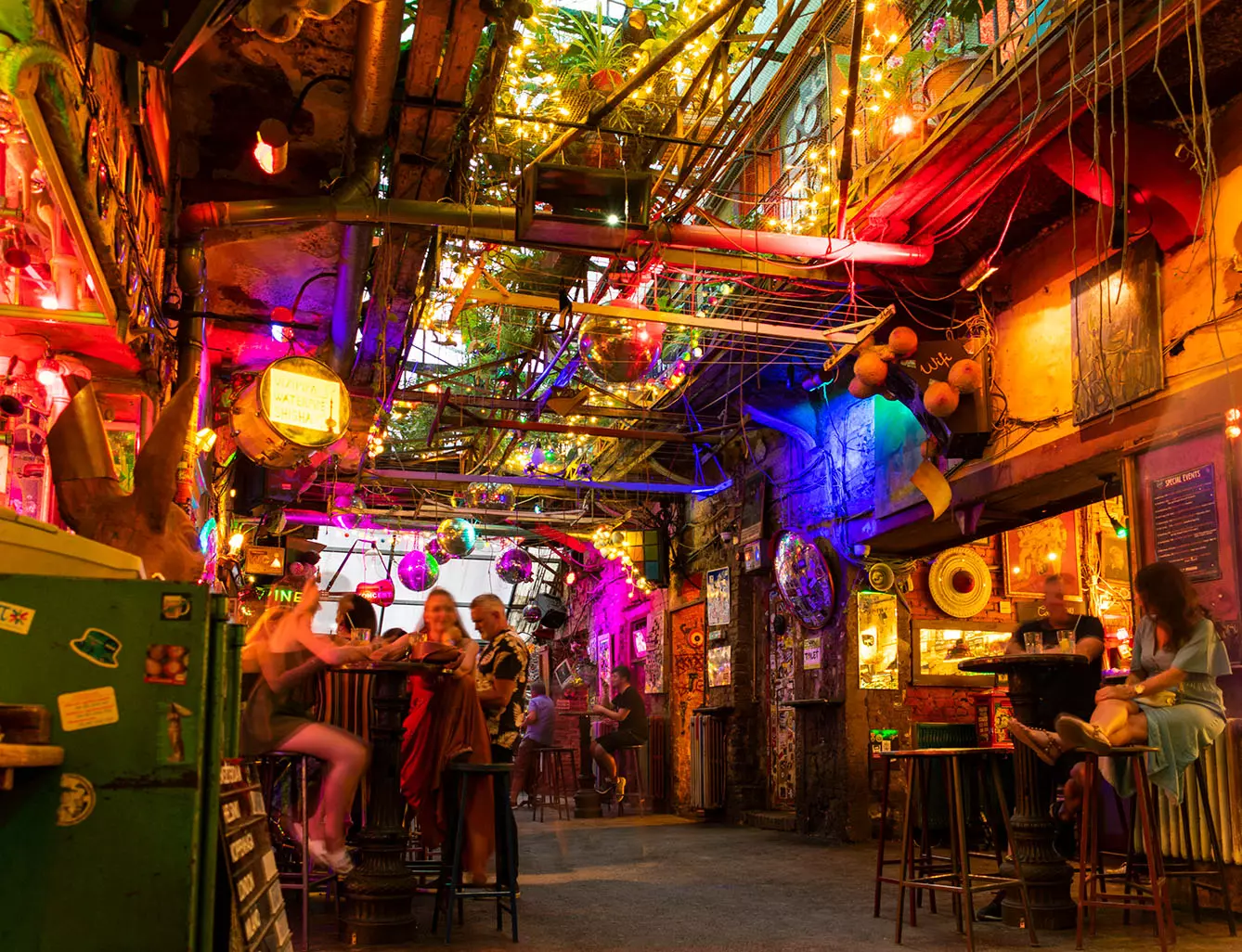
In the largest cities of Central Europe, former Jewish districts bear marks of this painful history in one way or another, sometimes in the form of a total redesign, sometimes – as in Budapest – in dilapidated areas full of ruins.
Ruin bars of Budapest: nature abhors vacuum
But, as the saying goes, nature abhors a vacuum. Eighty years after those tragic events, empty spaces deserve a second life, and boy, do they get one in Budapest – in the form of ruin bars. Modern gastronomy came to occupy those spaces – squat them if you will – at the beginning of the 21st century.
They quickly became called “ruin bars,” true to their design principles. The most important one is: to leave it as it was, not to overinvest. A ruin is supposed to stay a ruin – which adds to the atmosphere and, economy-wise, is the most clever solution anyway.
You take a ruin, you furnish it with basically any refurbished or upcycled furniture, and you fill bar shelves with something pleasant to drink. What you get is an underground-style venue in an overground location.
The pioneer among ruin bars was Szimpla Kert, or Simple Garden, established in 2002. A lofty style combined with art and regular events, including the farmer’s market, make it still the eye of the ruin bars tornado.
Let’s party
In Instant/Fogas, you get no less than seven dance floors with different music and styles, 18 bars, and two gardens. After visiting them, you can count a double score, as Instant & Fogas are technically two separate entities.
There are many more ruin bars to visit, like Fogas Haz, and there’s a whole sub-district of such venues in the former factory of lab instruments Tűzraktár. Obviously, this popularity encourages bar operators to come up with different ideas, and it’s not surprising if the next time you visit Budapest, you find something entirely new and hip that day.
And if you’re tired of visiting, there’s good news for you. Grandio Party Hostel is not only a ruin bar but also a ruin hostel. Don’t expect traditional luxury, but what you get instead is one of the best things Budapest offers: an immersive experience of culture growing on ruins.
See Also: Budapest Was Almost Named Pestbuda After a Long Debate


